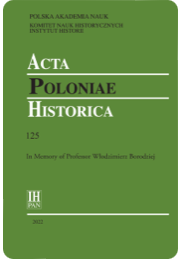Occupation as Social Practice and Ambiguous Space: The Lives of Ludwik Hirszfeld and Jan Czochralski in Warsaw, 1939–44
Occupation as Social Practice and Ambiguous Space: The Lives of Ludwik Hirszfeld and Jan Czochralski in Warsaw, 1939–44
Author(s): Katrin SteffenSubject(s): Fascism, Nazism and WW II
Published by: Instytut Historii im. Tadeusza Manteuffla Polskiej Akademii Nauk
Keywords: Ludwik Hirszfeld; Jan Czochralski; Eigensinn; Nazi occupation 1939–45; Warsaw Ghetto; clandestine teaching;
Summary/Abstract: This article evaluates the situation of two renowned scientists in Poland, namely the microbiologist and serologist Ludwik Hirszfeld (1884–1954), and the metallurgist Jan Czochralski (1885–1953), during the time of the German occupation from 1939–45. Both scientists strove to continue their scientific work even under the conditions of occupation but faced substantially different treatment by the occupiers: Hirszfeld was forced to live in the Warsaw Ghetto, while Czochralski was allowed to stay in his home and work at the former Technical University of Warsaw. The article takes a comparative approach and will analyse the life situation of both scientists. This means looking at the limits of action for both scientists on one side, and on the other, at the room for manoeuvre, which, under the conditions of a brutal occupation, either emerged for the two of them or they actively created.
Journal: Acta Poloniae Historica
- Issue Year: 2022
- Issue No: 125
- Page Range: 99-132
- Page Count: 34
- Language: English

